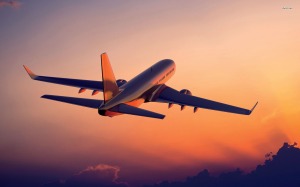Traveling in and of itself is a risk. There are all kinds of uncertainties associated with travel, including possible transportation delays or cancellations, illness or injury, natural disasters or other accidents. Not to mention the difficulties one might face by traveling to an area where they do not speak the language or understand the culture. In addition, there are personal challenges that you may have to overcome. For example, when I traveled to Costa Rica earlier this year, one of the experiences I was most looking forward to was ziplining. However, I have an insane fear of heights. Even though I desperately wanted to do it, I was still scared of the risks involved and it was a major challenge to overcome my fear. But boy was it worth it!

If you are in the travel blogging industry, taking your site (or your brand) social can be especially challenging. If you are working on your posts while abroad, you may have limited access to internet, and you may have difficulty charging or using other forms of equipment. Not only can this make it harder to make consistent and frequent posts, but it can also delay your responses to comments made by followers. As long as you are upfront about your travels and times when you may have to be off the grid, people will likely understand. Even if it’s not something that you know about ahead of time, if you apologize and explain your absence, I believe that it will be accepted by most as part of the job requirement.
Another challenge in taking your brand social in the travel blogging industry is standing out amongst the crowd. With thousands of people trying to start, maintain and create successful travel blogs, it can be hard to differentiate yourself from the competition. This site here: https://expertvagabond.com/travel-blogs/ shows a directory of travel blogs this user has compiled, and highlights some of the more successful ones. I’m sure today there are even more out there…probably new ones added each and every day. Therefore, choosing a strong, unique name is a great way to start things off. You’ll also need to come up with useful content. The issue here is that not everyone is going to agree on what is “useful content”, but that’s okay and it is to be expected. Regardless of the industry that you are in, there is no way of pleasing everyone. Allowing readers to provide feedback on posts will give you insight into what posts resonated with your audience the most. Honesty helps you gain credibility and respect…even if it is just your honesty, and other people see things differently or don’t agree. I found this interesting post by a travel bloggers, in which he talks about the problems that he has with other bloggers in the industry (http://www.leeabbamonte.com/travel-tips/problems-with-travel-blogs.html). It just goes to show that everyone is a critic and entitled to their own opinon.
However, despite all the possible challenges, not being on social media in some way shape or form is detrimental to your brand. The topic of travel is so prevalent on social media right now, whether it is individual users sharing their own travel experiences; airlines, hotels or cruise companies sharing promotions; travel bloggers sharing their content; or tourism companies sharing their thoughts on destinations and travel inspiration. Honing your expertise to one type of travel, whether that be luxury travel, backpacking, discount travel, volunteerism, or travel-related food blogging, will help you find your niche and narrow down your target audience. It also saves you from the potential of drowning in sea of possibilities. I’m still working to find my true passion within this vast industry so that I can focus my brand to fit my needs (and the needs of my target audience).






